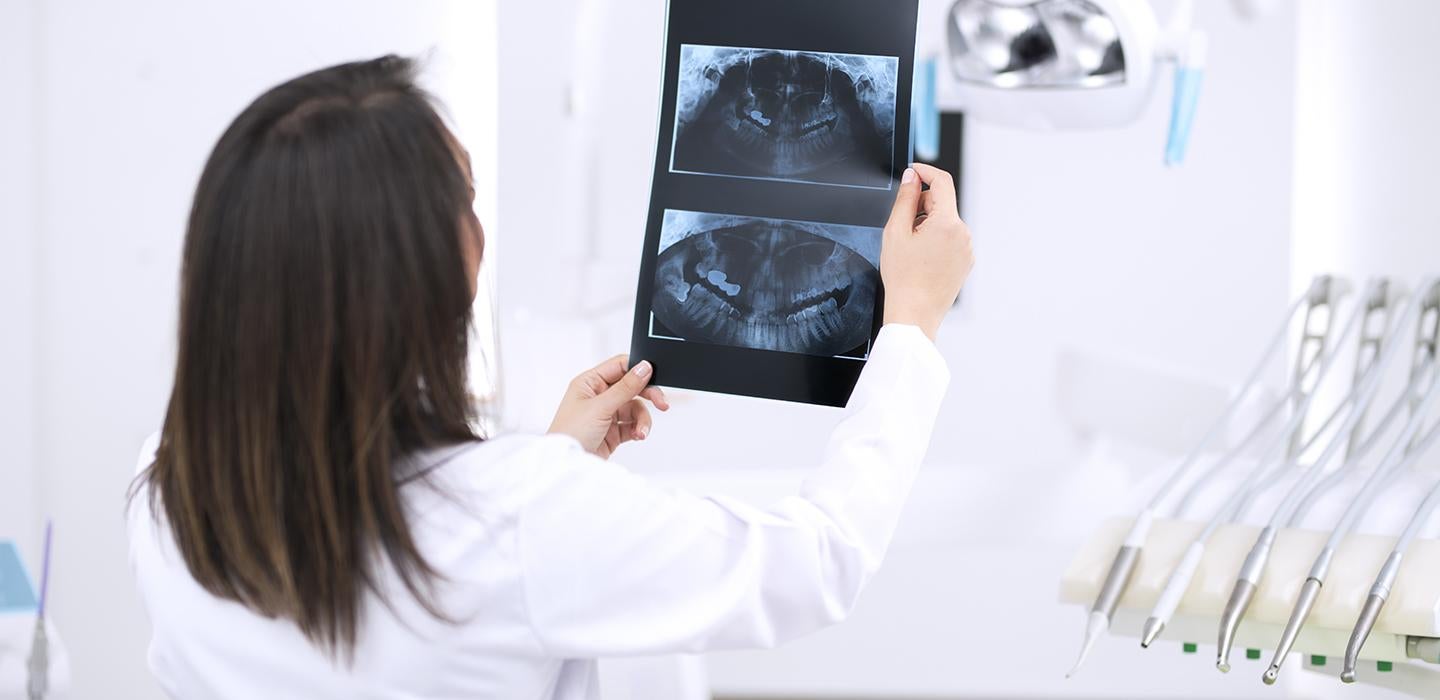
Subscribe to Pittwire Today
Get the most interesting and important stories from the University of Pittsburgh.The health of your teeth might seem separate from the health of your body — but recent Pitt research shows the same genes that affect diseases in our mouths may be linked to other diseases, including certain types of cancer.
“Cavities can be perceived as something small — like ‘Oh, it’s just a tooth,’” said lead author Mariana Bezamat, assistant professor in Pitt’s School of Dental Medicine. “But it’s the most common chronic disease in the world. If it turns out there’s a connection with other systemic health issues, I think it could get more attention.”
The work builds on Bezamat’s PhD research, which found that people with a variant of a particular gene, ERN1, were more likely to have certain kinds of dental diseases. Other studies suggested the gene might be associated with cancer in some groups, too. Bezamat decided to drill down into these associations to figure out whether particular types of cancer were to blame.
Looking at a group of more than 1,400 patients who had sought treatment from Pitt’s University Dental Health Services and had previously lost teeth, Bezamat and her colleagues confirmed the variant of ERN1 was linked to cancer — and showed that link was driven by a few specific kinds of cancers.
The team, including School of Dental Medicine Professor Alexandre Vieira and School of Medicine Assistant Professor Scott Rothenberger, published their work in the journal Scientific Reports.
“We found that the cancers that were driving the associations were breast cancer and skin cancer,” which came as a surprise, Bezamat said. “They’re not at all related, but different cancers.”
Patients with the gene variant were more than twice as likely to have both skin and breast cancers than those without it. While it’s not yet clear why variants in the ERN1 gene might be connected to cancer or dental disease, the gene plays a role in stress pathways in the endoplasmic reticulum — a network of tubes within cells that’s important for transporting and folding proteins.
Studies in mice suggest the gene can affect tooth strength and quality, but much more research is needed before associations like these could be used to help patients directly. Many factors, both genetic and environmental, can contribute to the likelihood of cancer. And this particular gene might not even be the cause of the link shown in the study, Bezamat explained. The real culprit might instead be a nearby stretch of DNA, with ERN1 simply along for the ride. “There is a need for animal studies and additional human genetic studies to really confirm this, and there are a lot of steps to get there,” said Bezamat.
The study itself also had several important limitations. Participants were predominantly white Pittsburgh-area residents, and the data on cancer diagnosis was based on self-reporting by patients.
Bezamat hopes to tackle the question in the future with linked dental and medical records from patients. Along with being a more accurate way to assess cancer diagnoses, a larger data set may reveal associations with other diseases that show up less in the general population. “We didn’t have the statistical power to find associations with rare cancers,” Bezamat said. “It doesn’t mean the association is not there, but we didn’t have the ability to find it.”
She also plans to look at specific changes to tooth structure or the mouth microbiome in patients who had been diagnosed with cancer to further explain what’s driving the genetic link. With more research, finding links between dental disease and other common health issues could provide important early warnings for patients.
“If there is a more established link between oral health and systemic health, or even cancer specifically, that could be really impactful,” Bezamat said.
— Patrick Monahan, image by Getty


